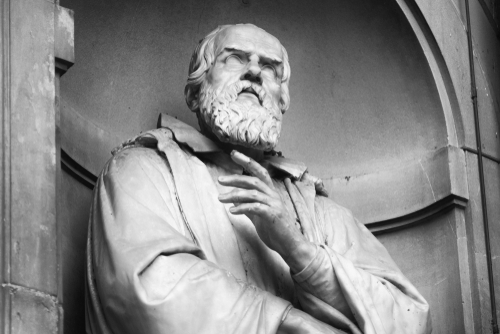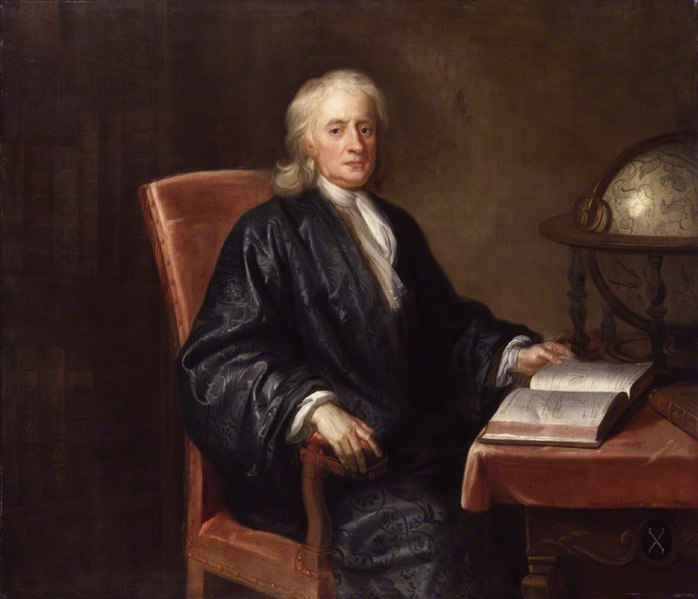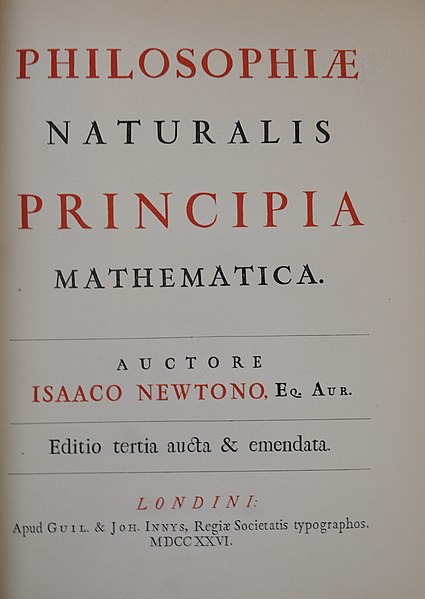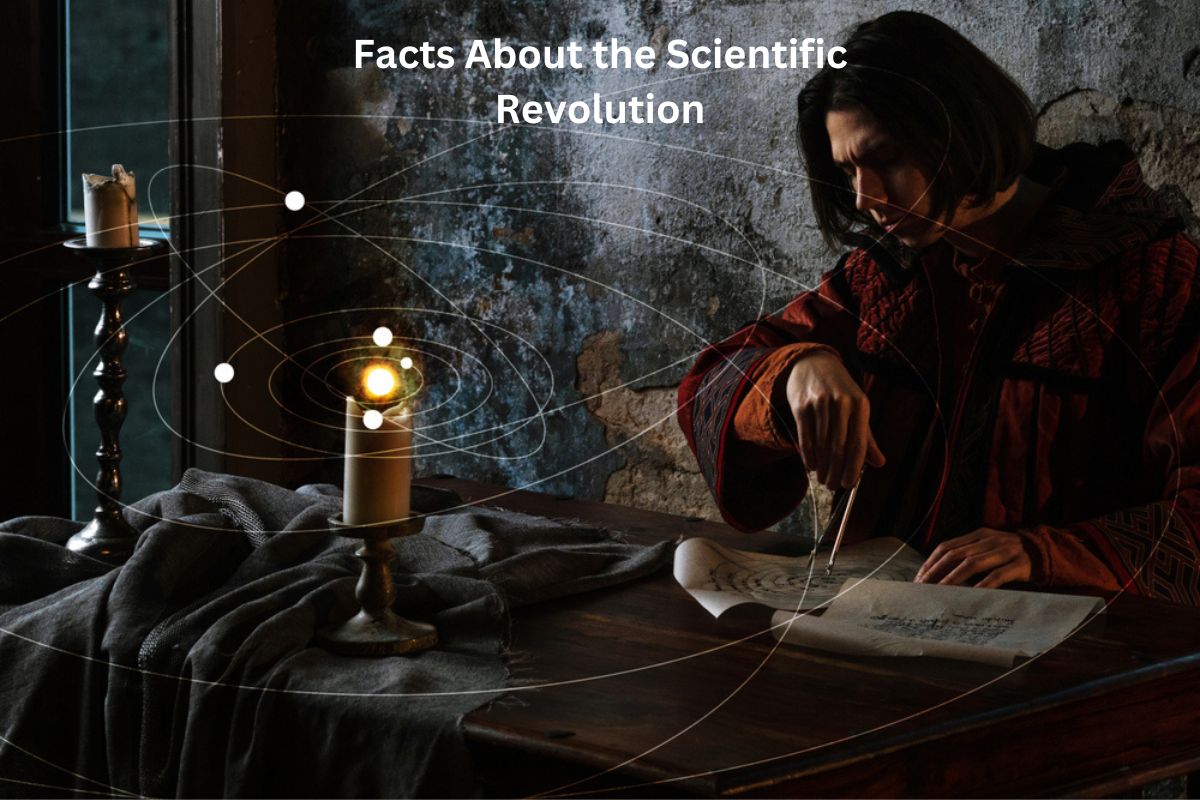The Scientific Revolution was a transformative period in European history that unfolded from the late 16th century to the 18th century.
During this time, profound changes in scientific thought and methodology reshaped humanity’s understanding of the natural world.
It witnessed breakthroughs like the heliocentric model of the solar system, the development of the scientific method, and the pioneering work of figures like Galileo Galilei and Isaac Newton.
These developments not only revolutionized science but also had a profound impact on society, setting the stage for the Enlightenment and shaping the modern world.
Scientific Revolution Facts
1. It took place from the late 16th century to the 18th century in Europe
The Scientific Revolution occurred primarily in Europe, spanning from the late 16th century to the 18th century. It was a period marked by a radical shift in the way people approached the understanding of the natural world.
Also Read: Scientific Revolution Timeline
Prior to this period, much of Europe relied heavily on medieval scholasticism and religious authority for explanations of natural phenomena. The Scientific Revolution was a response to this traditional view and aimed to replace it with empirical and evidence-based approaches.

2. The heliocentric model of the solar system was a major breakthrough
The heliocentric model of the solar system was a groundbreaking concept introduced by the Polish mathematician and astronomer Nicolaus Copernicus.
His seminal work, “On the Revolutions of the Celestial Spheres,” published in 1543, challenged the geocentric model (where Earth was believed to be the center of the universe) by proposing that the planets, including Earth, actually orbited the Sun.
This was a revolutionary idea because it contradicted centuries of accepted wisdom and challenged the authority of the Catholic Church.
3. Galileo Galilei made significant contributions to astronomy
Galileo Galilei, an Italian scientist, played a pivotal role in furthering the acceptance of the heliocentric model.
Using telescopes he designed and built himself, Galileo made a series of important astronomical observations. He discovered the four largest moons of Jupiter (now known as the Galilean moons), observed the phases of Venus, and noted sunspots. These observations provided compelling evidence for the heliocentric model.
However, his findings brought him into conflict with the Catholic Church, which considered heliocentrism heretical. Galileo was eventually tried by the Inquisition, forced to recant his views, and spent the rest of his life under house arrest.
Despite his personal challenges, Galileo’s work greatly advanced the cause of empirical astronomy and helped pave the way for the broader acceptance of the heliocentric model.

4. The Scientific Method became a cornerstone of scientific inquiry
The Scientific Revolution emphasized the importance of the scientific method, which is a systematic approach to investigating the natural world. This method involves making observations, formulating hypotheses, conducting experiments, and analyzing data to draw conclusions.
Sir Francis Bacon, an English philosopher and statesman, is often credited with promoting and codifying the scientific method. He stressed the importance of empirical observation and inductive reasoning, where general principles are derived from specific observations rather than relying solely on deductive reasoning.
5. Isaac Newton’s laws of motion and gravitation were influential
Isaac Newton, an English physicist and mathematician, is one of the most iconic figures of the Scientific Revolution. His work laid the foundation for classical mechanics, which is still a fundamental branch of physics today.
Newton formulated three laws of motion that describe how objects move. These laws are known as Newton’s Laws of Motion and include the concepts of inertia, force, and action-reaction.
Newton also developed the law of universal gravitation, which explained how objects are attracted to one another due to their mass and distance. This law provided a unified explanation for both terrestrial and celestial motion.
His groundbreaking work was published in his book “Philosophiæ Naturalis Principia Mathematica” (Mathematical Principles of Natural Philosophy) in 1687 and had a profound impact on the way scientists approached the study of the physical world.
It unified the study of motion on Earth and in the heavens and demonstrated the power of mathematical analysis in describing natural phenomena.

6. Scientific academies and societies, like the Royal Society, were established
One of the notable features of the Scientific Revolution was the formation of scientific academies and societies in various European countries. These organizations played a crucial role in promoting and advancing scientific knowledge and inquiry.
The Royal Society of London for Improving Natural Knowledge, commonly known as the Royal Society, was founded in 1660. It is one of the world’s oldest scientific academies and remains a prominent institution today.
The Royal Society provided a platform for scientists to collaborate, share their findings, and conduct experiments. It published scientific journals and played a pivotal role in disseminating scientific knowledge.
Similarly, the Académie des Sciences in France was established in 1666 under the patronage of Louis XIV. It became a leading institution for scientific research in France and fostered advancements in various fields, including mathematics, physics, and astronomy.
7. Advances in medicine, such as understanding human anatomy, occurred
The Scientific Revolution brought significant advancements in the field of medicine. One of the key figures in this regard was Andreas Vesalius, a Flemish anatomist.
He challenged the traditional views of human anatomy and published “De humani corporis fabrica” (On the Fabric of the Human Body) in 1543, which featured detailed and accurate illustrations of the human body based on his own dissections.
William Harvey, an English physician, made groundbreaking contributions by describing the circulation of blood in his work “De Motu Cordis” (On the Motion of the Heart) in 1628.
He explained how blood is pumped by the heart through a closed circulatory system, countering previous misconceptions about the movement of blood in the body.

8. Empirical observation and data collection were emphasized
The Scientific Revolution marked a significant shift towards empirical observation and experimentation. Instead of relying solely on philosophical reasoning or ancient texts, scientists began to prioritize firsthand observations and data collection.
This empirical approach allowed for a more accurate and evidence-based understanding of the natural world. Scientists began conducting experiments to test hypotheses and gather empirical evidence to support their theories, laying the groundwork for modern scientific methodology.
9. New instruments like the microscope were developed
The Scientific Revolution saw the development of various instruments and tools that enabled more precise observations and measurements. Notable inventions included the telescope, which was famously used by Galileo to observe celestial objects and discover celestial bodies like Jupiter’s moons.
The microscope also played a crucial role in advancing our understanding of the microcosmic world. Antonie van Leeuwenhoek, a Dutch scientist, made significant contributions to microbiology by using microscopes to observe bacteria and other microorganisms.
10. The Scientific Revolution had a profound impact on society and led to the Enlightenment
The Scientific Revolution had a profound impact on society, transforming the way people viewed the world and their place in it.
It challenged traditional religious and philosophical authority, paving the way for a more secular and rationalist worldview. This shift in thinking contributed to the Enlightenment, an intellectual movement in the 18th century that emphasized reason, individual rights, and the separation of church and state.
The Enlightenment, in turn, played a crucial role in shaping modern democratic and scientific societies, where reason, inquiry, and empirical evidence are highly valued.
